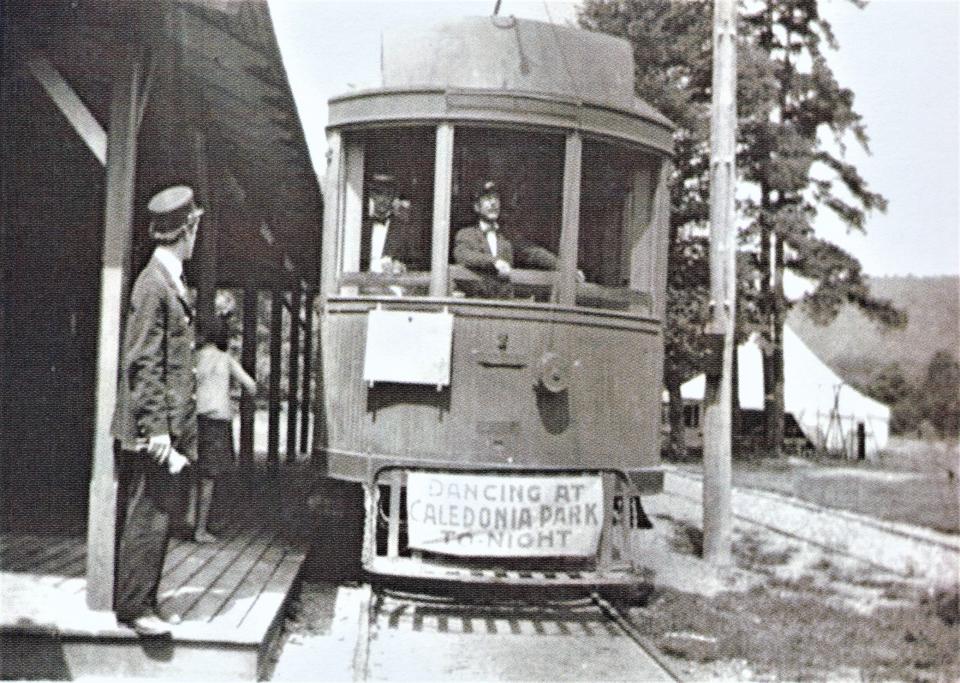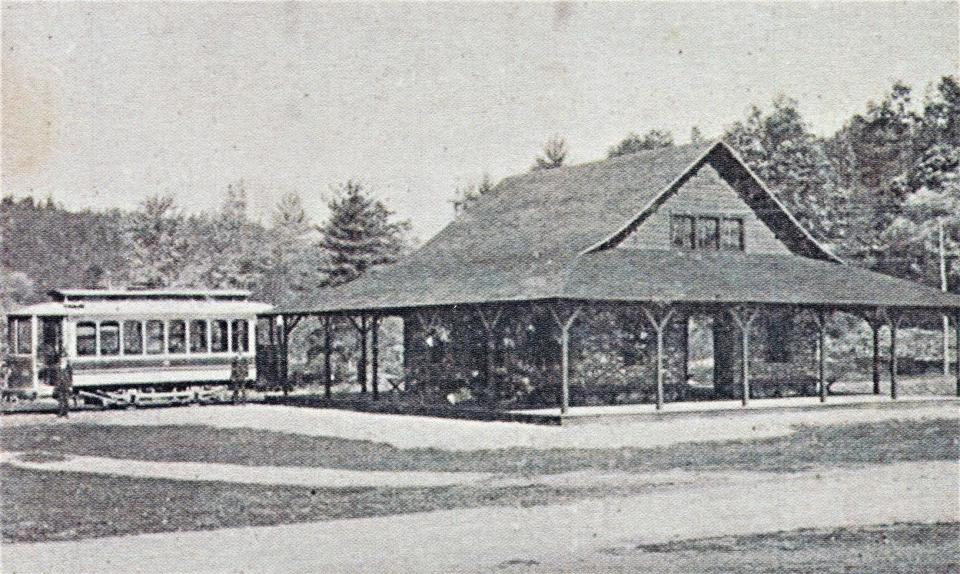Chambersburg & Gettysburg Electric Street Railway provided a great escape
The citizens of Chambersburg learned late in the year of 1900 that an electric street railway had been chartered and the construction of the line would begin soon. The new trolley car line was to be called the Chambersburg & Gettysburg Electric Street Railway Co.
The trolley line was to travel through the various parts of Chambersburg, then east through Stoufferstown, Stricklerdale, Fayetteville, Greenwood, and finally the beautiful Caledonia State Park where the line ended.
The officials of the C&G were able to lease a small portion of the park from the state of Pennsylvania, and it was here where the amusement rides and dance pavilion could be enjoyed by all. Unfortunately the interested parties from Gettysburg were never to able to come up with the necessary funding to continue the electric street railway to Gettysburg.

During the early days of the Lincoln Highway, Caledonia park had become a featured stop for many early automobile travelers near and far to stop and enjoy the beautiful surroundings.
The famous former Thaddeus Stevens blacksmith shop was renovated and used as a trolley car station.
So with the electric street railway chartered in the State of Pennsylvania, next came seeking permission to construct and operate the electric street railway within the Borough of Chambersburg.
The town council passed an ordinance that established a time period of 95 years for operating the trolley car line, but the company was also subject to meeting certain conditions and obeying related restrictions as set forth in the agreement.
The C&G was authorized to construct, maintain and operate a single-track electric railway that had the necessary turns and sidings operated by electricity as the source of power.
The C&G line traveled through various spots in the borough, and when the trolley car tracks were installed by the electric street railway, the workers couldn't alter the road surface unless it was approved by the Town Council through an amendment that had to be incorporated into the existing ordinance.
The tracks had to be laid in the center of each street, and the poles used to support the electric line were of wood or metal and had to be at least 18 feet high.
The electric street railway was also required by the agreement to repair all damage to the streets, curbs, sidewalks and crossings caused by the construction and maintenance of the trolley car line, as well as all damages to the sewer, gas and water pipes.

The trolleys couldn't exceed 12 miles per hour in Chambersburg, and when approaching all intersections, they had to reduce their speed to 6 miles per hour.
It's interesting to note that the mayor, Town Council members, uniformed policemen, and the other borough departments were given free transportation within the borough.
Additionally, during the winter months, snow and ice couldn't be thrown into the street obstructing the flow of traffic.
It was the responsibility of the electric street railway to furnish and operate a sufficient number of trolley cars to accommodate the public, to have the proper signal lights on each trolley car for evening operation and to have conductors on every car.
The trolley cars were required to stop 20 feet from railway crossings at which time the conductor went to the railroad track, then signaled the car when to proceed.
Naturally, it was only appropriate in conducting business that the borough required the Chambersburg & Gettysburg line to provide a $10,000 bond to pay for any damages and to hold the borough harmless from all damages which resulted from construction, maintenance and operations.
During a building fire within the borough, when a fire hose might be laid across the track, a trolley car had to stop and wait until the fire was extinguished and the fire hose removed. In 1905, the Cumberland Valley Railroad Co. purchased the C&G line and added two new trolley cars to its fleet.
The cars were built in 1907 and 1908 respectively, and car No. 11 and car No. 12 were both made in one of the Cumberland Valley shops on North Second Street in Chambersburg, next to Corpus Christi Catholic Church.
When you bought a ticket for passage on a Chambersburg & Gettysburg Electric Street Railway car heading to Caledonia State Park you knew you were going to make the great escape and enjoy yourself.
The C&G line ceased operations on Dec. 21, 1926.
M.L. “Mike” Marotte III is an author and historian who writes about the history of Franklin County. Read more of him at www.vintagefranklincountypa.com.
This article originally appeared on Chambersburg Public Opinion: Trolley line took passengers from Chambersburg to Caledonia State Park

